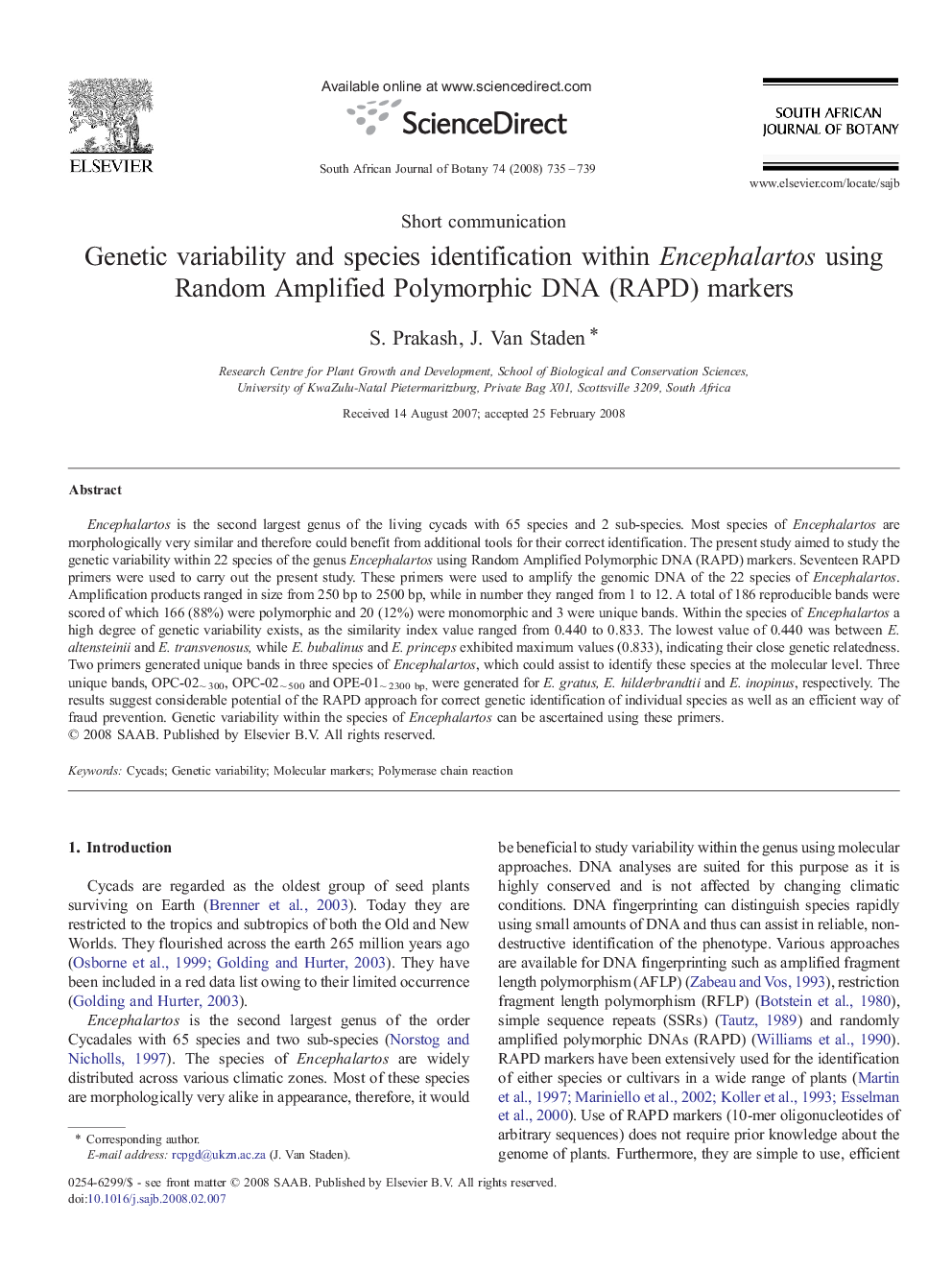| Article ID | Journal | Published Year | Pages | File Type |
|---|---|---|---|---|
| 4521605 | South African Journal of Botany | 2008 | 5 Pages |
Encephalartos is the second largest genus of the living cycads with 65 species and 2 sub-species. Most species of Encephalartos are morphologically very similar and therefore could benefit from additional tools for their correct identification. The present study aimed to study the genetic variability within 22 species of the genus Encephalartos using Random Amplified Polymorphic DNA (RAPD) markers. Seventeen RAPD primers were used to carry out the present study. These primers were used to amplify the genomic DNA of the 22 species of Encephalartos. Amplification products ranged in size from 250 bp to 2500 bp, while in number they ranged from 1 to 12. A total of 186 reproducible bands were scored of which 166 (88%) were polymorphic and 20 (12%) were monomorphic and 3 were unique bands. Within the species of Encephalartos a high degree of genetic variability exists, as the similarity index value ranged from 0.440 to 0.833. The lowest value of 0.440 was between E. altensteinii and E. transvenosus, while E. bubalinus and E. princeps exhibited maximum values (0.833), indicating their close genetic relatedness. Two primers generated unique bands in three species of Encephalartos, which could assist to identify these species at the molecular level. Three unique bands, OPC-02∼ 300, OPC-02∼ 500 and OPE-01∼ 2300 bp, were generated for E. gratus, E. hilderbrandtii and E. inopinus, respectively. The results suggest considerable potential of the RAPD approach for correct genetic identification of individual species as well as an efficient way of fraud prevention. Genetic variability within the species of Encephalartos can be ascertained using these primers.
